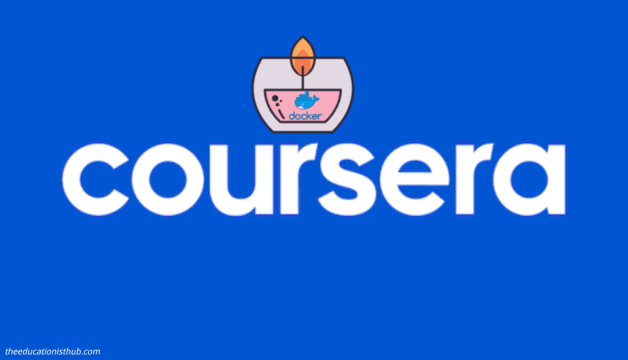Last Updated on: 17th January 2025, 08:51 pm
How Tangled Coursera was Untangled with Docker?
Coursera is one of the leading online learning platforms. It offers thousands of free courses from top universities and organizations. In today’s world, Coursera has set a new milestone in the e-learning sector.
Software engineers will still have one question about Docker and Docker alternatives – how does it help Coursera deploy, develop, and maintain the whole job? Let’s dig into the guide to have more further information.
What is Docker?
Before staring at how Docker turned Coursera around, we have to know the basic understanding of Docker. Docker is an open-source software framework and it is based on containers. Developers build an application on these small and lightweight containers. It makes development efficient and predictable.
Docker ensures that your application can run quickly in any cloud environment. It comes with containerization tools that will allow the applications to create, test and deploy. With Docker, you can run your web application in any environment. The container has everything you need to simplify, manage and develop. It is designed to benefit DevOps.
What is Coursera?
Coursera is an online educational site built by two Stanford University computer science professors in 2012. Right now, it is one of the popular online learning platforms that is giving top-class services worldwide. It is now a go-to educational site for millions of students. It has a variety of courses. From personal development courses to bachelor’s and master’s degree programs, all are available there.
Currently, more than 13 million users are using Coursera from 190 countries. It provides free courses to audit. Although, you have to pay if you want certificates. You can take any classes from any side of the world through Coursera. You can learn virtually on this platform.
The Challenges of Coursera
Coursera was introduced by Massive Open Online Course (MOOS). MOOS delivers a worldwide higher educational experience. On the other hand, Coursera separates itself and offers different benefits to the students, universities, and employees.
After all the name and fame, Coursera still has a few challenges to deal with. Let’s see some of them.
Complicated Design: Coursera is a large, powerful, and rigid web application. It is built under a single-tiered software application. This means all the data access codes are connected to a single platform. Developers were finding it very difficult to run, scale and deploy and the procedure takes a lot of time to do one job.
Whenever a task is needed to complete in Coursera, It takes individual memory and CPU space. Each task requires an individual memory. Because of this, Coursera lost most of its productivity.
The engineering team of Coursera created a microservice architecture by using docker containers. It was an effective move, but they started facing problems as they used Apache Mesos. They used this to control the cluster and containers. Because Mesos was complicated and Coursera didn’t have the time to manage the Mesos cluster.
Docker as The Savior
Docker is ideal for creating a local development landscape. It is because it allows you to simply add operating processes without duplicating virtualized resources. Furthermore, it allows you to run multiple versions of the same application without having to worry about configuration issues and port conflicts.
Docker created a consistent platform for Coursera from development to production. This allowed them to start from the same place each time. On a server, they can quickly start a new process. Due to the image being prepared and installed along with the process, the problem of starting a process is eliminated. Containers running under Docker are isolated from the internet, system files, and other activities.
Docker also helped Coursera to maintain a layered file system. In the file system, every change they make to a container or a picture creates a new layer. File system layers are cached, which reduces the amount of repeating steps in the Docker build process as well as the time required to upload and download comparable images.
How Coursera Benefitted?
Docker brings many benefits for Coursera. Because of ECS, Coursera can deliver its maximum service without having any errors. Here’s how Coursera benefited from Docker.
- Easy To Use: Coursera is based on Amazon ECS. And ECS doesn’t take too much time to process. It controls all the details of the cluster. The team follows the system to give proper results.
- Scalability: Scalability allows compute capacity to scale up or down anytime. It only takes up the space it needs. It will handle any difficult job with ease.
- Operational Efficiency: There is no extra labor for installing software or managing clusters. ECS already handles everything from the cluster. It doesn’t spend too much time on container orchestration.
Are there any Docker alternatives?
Even though Docker is a sophisticated independent ecosystem with a robust toolset for handling the containerization process, various Docker alternatives have distinct use cases and capabilities. Below two of the most popular ones will be discussed.
-
Podman
Podman is a prominent container processor among container technologies. It provides a user interface that encapsulates the intricacies of interacting with security management rules and policies like Seccomp and SELinux, allowing users to handle and utilize containers.
One notable distinction between Docker and Podman is that the former uses a self-contained runtime that handles object management. Podman does not rely on a daemon to function. It also uses a runtime process to connect directly with the registries and the Linux kernel.
-
Containerd
Containerd, a high-level container, uses runs to create a connection between the operating system and container engines. Runs, a daemon, runs on Windows and Linux that abstracts OS-specific functions to make it easier to handle image transfer and storage, as well as launch and oversee containers.
Containerd, unlike Docker, does not manage the construction of volumes or the production of images. A container is a useful orchestrator tool, and as a result, it is one of the most popular Docker alternatives.
Final Words
Coursera has become a popular online education provider. It brings education to the doorstep. It is a technology that has only one motive, universal access to the educational system.
Docker has made it easier to do that. With the help of Docker, the internal team makes Coursera more productive, flexible, and agile. Also, Docker eliminates the error to make it perfect for everyone. So that they can provide the world’s best curricula.



